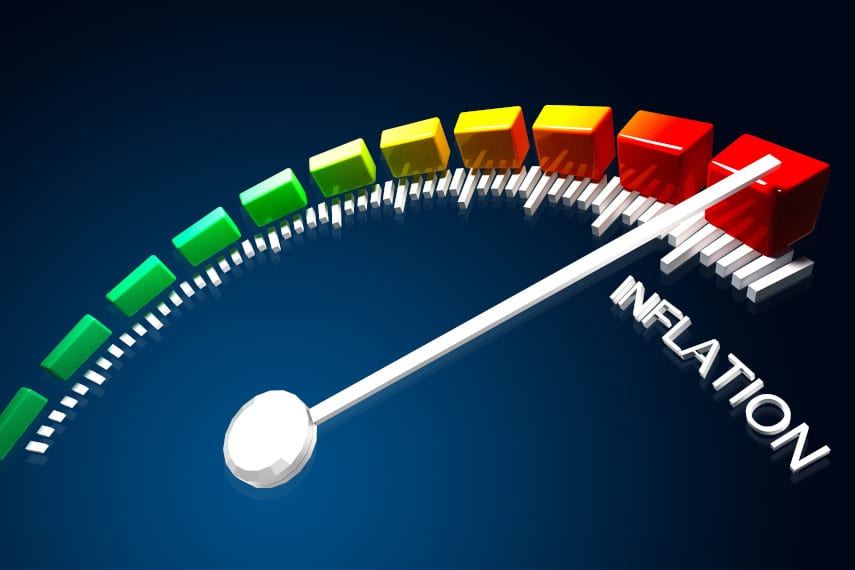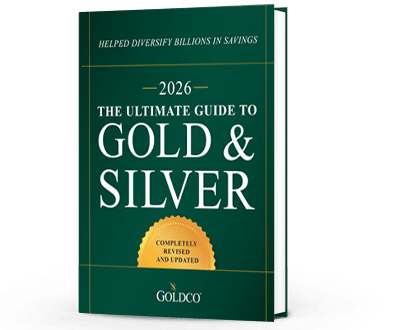6 Indicators of a Potential Recession
It seems that in the media today there are more and more mentions of the dreaded R-word: recession With growing economic uncertainty, the threat of potential recession seems to be growing as...
Economy

Inflation is pernicious and destructive. The constant rise of prices that results from monetary inflation slowly erodes the purchasing power of money, surreptitiously stealing from savers and investors. Inflation benefits debtors and spenders, and harms those who want to save and invest for the future. And because governments are the biggest debtors of all, inflation is all but certain in the economy today.
Even “low” inflation of the 2% or so targeted by many central banks results in prices more than quadrupling over the lifetime of the average American. And if you expect to live at least 20 years in retirement, your cost of living will increase at least 50% as a result of this “low” inflation.
That kind of erosion of your standard of living isn’t enough for the Federal Reserve, which has vowed to try to boost inflation to even higher levels. There’s a real risk to allowing that to happen, most especially because it can take months to determine just how bad inflation is impacting the economy. By the time those damaging effects are seen and responded to, the damage may have already been done.
During the 2008 financial crisis there were many fears of out of control inflation due to the Fed’s quantitative easing, but those fears never materialized. This time is different though, and there four major indicators that higher inflation is coming.
Despite the trillions of dollars of quantitative easing on the part of the Fed during and after the 2008 crisis, those monetary injections were largely never reflected in money supply growth. The money supply continued growing at the rate it had before. This was due largely to the fact that the Fed paid interest on excess reserves, incentivizing banks to hold these monetary injections as reserves rather than lend them out.
Had banks lent this money out, its circulation through the financial system would have eventually led to a rise in the money supply and a corresponding rise in prices. But with a very uncertain lending climate in the aftermath of the collapse of the housing bubble, banks were skittish and hesitant to lend money, lest their loans go bad. For them it was far safer to park money at the Fed and earn even a minuscule amount of interest rather than risk a total loss on bad loans.
This time around, the Fed isn’t taking the same approach. It isn’t trying to sop up its monetary injections with interest on excess reserves, and so money supply figures are rising. The M1 money supply rose nearly 70% in 2020, while the M2 money supply rose about 25%. The Fed has tried to make it more difficult to track money supply growth with its recent changes to money supply calculation, but it can’t hide the fact that the money supply is growing significantly.
The effect of the rising money supply, particularly in an economy with production that hasn’t caught up to pre-COVID levels, is rising prices. And with no end to the Fed’s loose monetary policy in sight, we could be in for a few years worth of higher inflation.
Producers of numerous products have begun to warn consumers to expect higher prices in the future. Major companies such as Kimberly-Clark, General Mills, and J.M. Smucker have already announced price increases, and other large corporations could follow suit. Ammunition manufacturers have announced price increases coming this year as well, and many of these increases are in the high single and low double digits.
The fact that producers are giving such advance notice is a sign that they don’t want consumers to suffer sticker shock at the register. And it’s also a sign that these may not be the last round of price increases. For a variety of reasons, we may see more of these increases as the year progresses.
If you’ve filled up your car lately, you’ve probably noticed that the price of gas has increased significantly over the past several months. You’re probably wondering why this is, especially since so many people are still working from home. But gas is only one price of many that is increasing.
Prices at the grocery store continue to rise, as eggs, meat, and vegetables continue to get more expensive. If you’ve been in the market for a used car, you’ve probably shaken your head more than a few times at how expensive cars are today. And that goes for just about everything we buy. Prices continue to rise while incomes remain largely unchanged. The only thing that’s different is that households are receiving stimulus payments. But even those aren’t going as far as they used to.
Normally Fed officials like to try to deny that there’s a link between their monetary policy and rising prices. But with the Fed having publicly stated that it wants to boost inflation, Fed officials now have to own any price increases that result. And they’re doing more than just owning it, they’re outright warning us that we could see many months of price increases ahead of us.
Fed Chairman Jay Powell has warned of price increases, although he tried to deny that inflation had anything to do with them. And Chicago Fed President Charles Evans, one of the Fed’s noted doves, indicated that the Fed is going to have to let inflation run wild for months before determining whether the Fed’s new policy has been effective. Even he admitted that this could be uncomfortable for many.
When you hear straight from the horse’s mouth that inflation is on the way, it’s wise to pay attention. And it’s even wiser not just to listen, but to take proactive steps to defend yourself against this coming inflation.
Inflation isn’t just dangerous to those saving and investing for retirement, it can also be dangerous for those who are retired and living on fixed incomes or who are dependent on investment returns for their income. If you’re expecting your retirement savings to last you through retirement, and your returns keep getting eaten away by inflation, you’ll burn through your savings quicker than you expect. That’s why you need to defend yourself against inflation.
One traditional asset that investors have relied on to protect themselves against inflation is gold. Gold’s ability to maintain its value in the face of inflation has motivated thousands of investors over the years to trust it to protect the value of their savings. Over the past 20 years, gold has even outperformed stock markets, providing investors not just with protection against inflation but also giving them much-needed asset growth.
If you’re nearing retirement or already retired and are worried about inflation eating away at your nest egg, now is the time to start thinking about gold. Whether you want to roll over or transfer existing retirement savings into a gold IRA or just invest in a few rolls of gold coins, there are options out there to suit everyone. Give the experts at Goldco a call to learn more about how gold can help protect your hard-earned retirement savings from the ravages of inflation.

